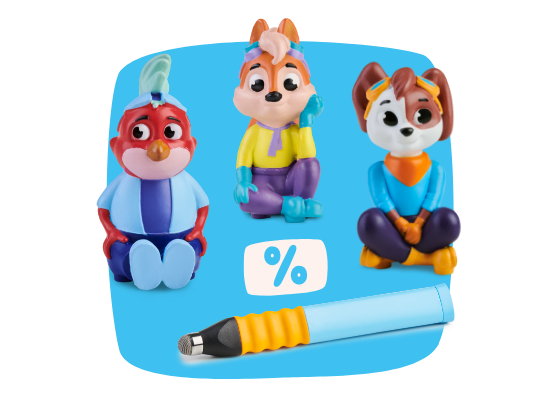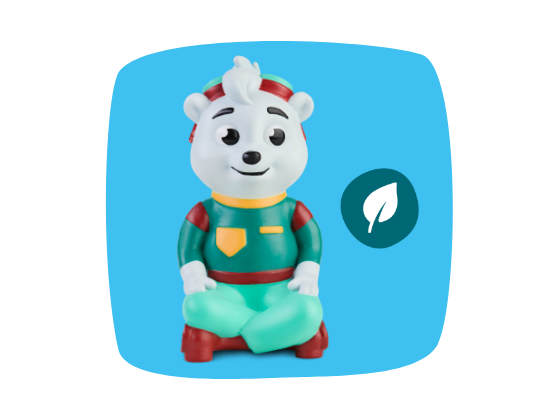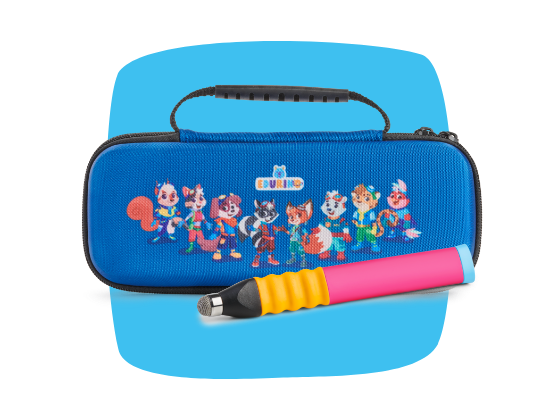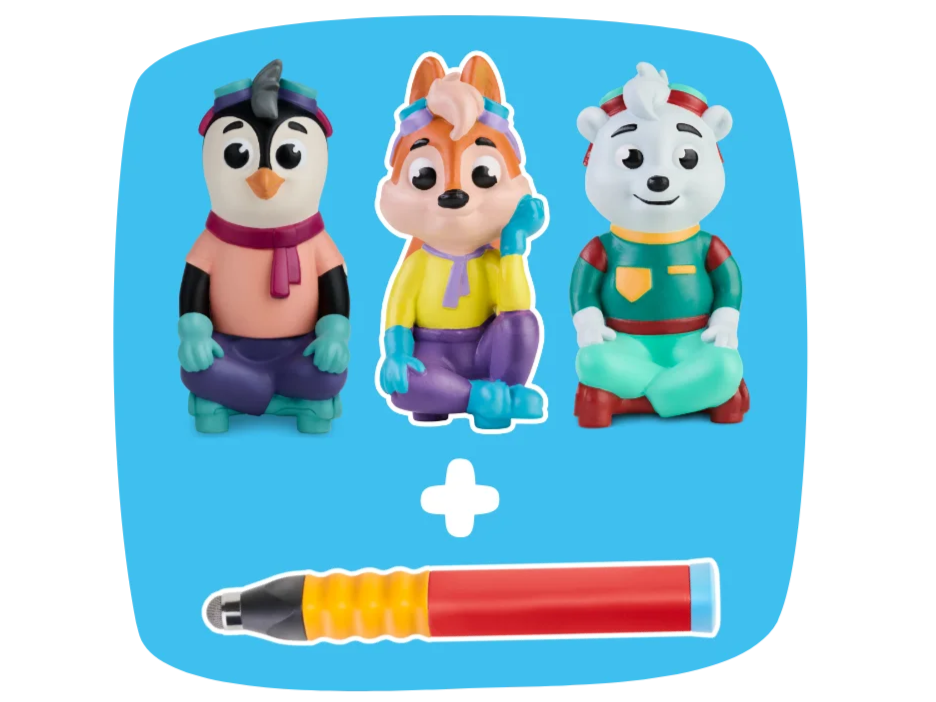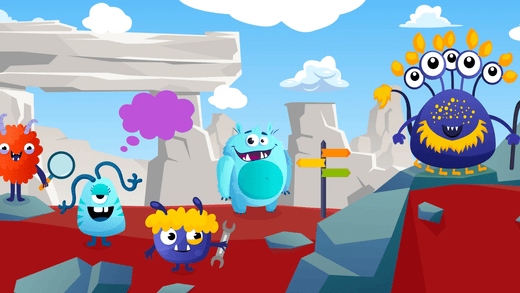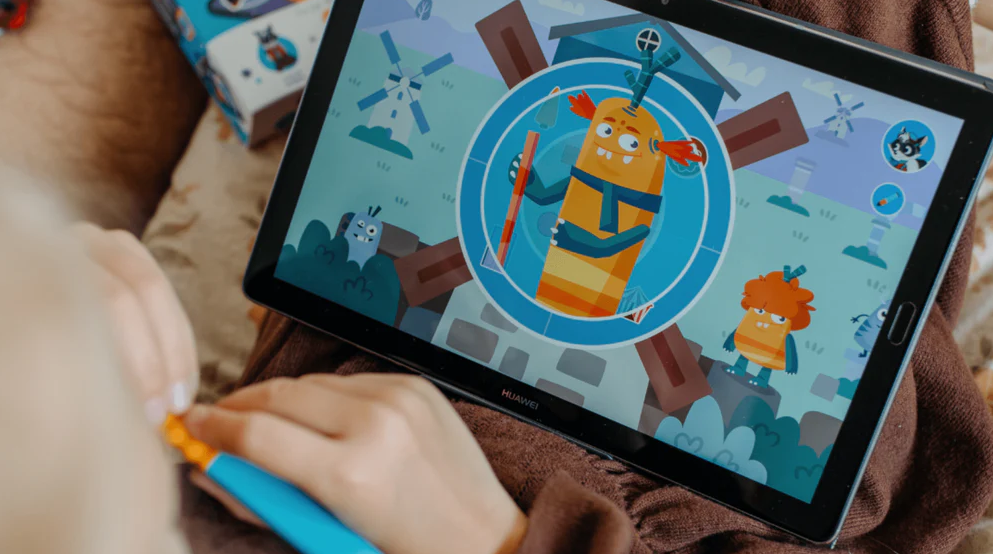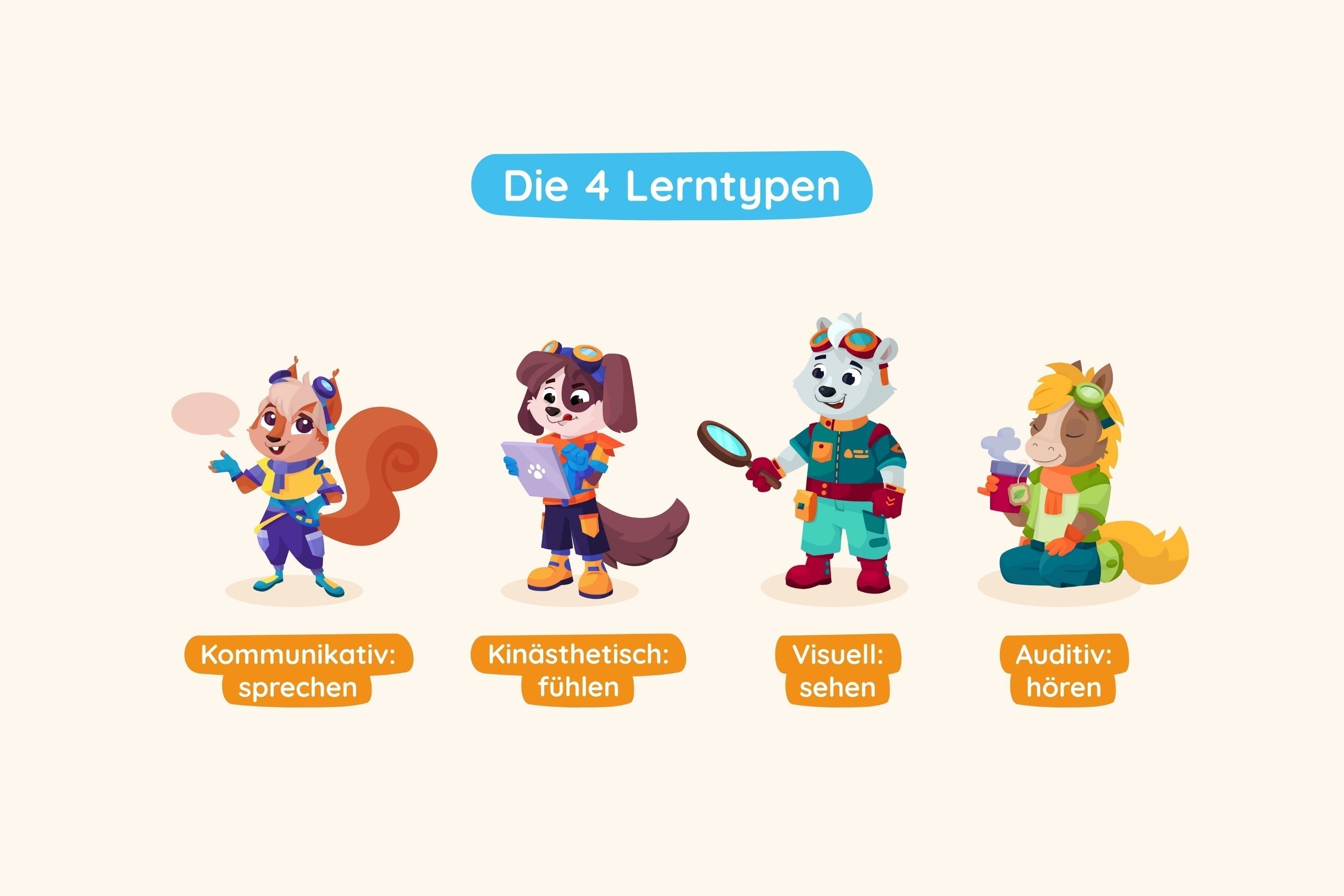Thinker, decision-maker, explorer, or doer? Everyone has a different tendency to approach problems and find solutions accordingly. Learning styles can provide guidance on how to make learning child's play and a whole lot of fun!
Learning styles - an orientation into old age
In our last blog post, we already critically examined the concept of " learning styles " and concluded that learning is individual, and everyone has to figure out how they best absorb information. However, once you've identified your preferences, learning becomes much easier and, above all, much more enjoyable. And the best part is: It can help you learn new things throughout your life—keyword here: lifelong learning.
The learning style according to Kolb (David Allen Kolb)
The American psychologist and educational researcher David Allen Kolb sees learning as a cyclical process that begins with experience. After the experience, the child reflects on it and draws conclusions, e.g., "I can produce something with a pen." This is followed by a phase of active experimentation, and the learner tests this concept, e.g., by trying out anything that looks like a pen (this also applies to our ergonomic triangular pen, which the children in daycare always use to test whether it works on paper or the desk ;)).
In 1981, Kolb derived the following four learning styles from this learning cycle. According to this theory, every person combines all four learning styles, but often there are one or two types that are more pronounced. When you discover this in yourself and your child, mutual understanding is much greater, and learning together is much more fun.
Assimilators (thinkers)
Assimilators are theorists who like to search for definitions and general conclusions in a logical and structured way. They like concepts and graphic representations and are easily irritated by anything unsystematic or overly emotional.
Convergers (decision makers)
Convergers are specialists who prefer efficiency and objectivity. They make quick decisions, enjoy working in teams, and present results. They dislike repetition, passivity, and individual work.
Divergers (Explorers)
Divergents are universalists who like to question things and love to discuss things. They like to weigh things up, have a lot of imagination, and often need some time before making decisions. Spontaneity isn't really their thing.
Accommodators (makers)
Accommodators are pragmatists who don't shy away from challenges and risks. They act quickly and often want to implement what they have learned immediately. They tend to dislike too much theory and unclear instructions.
The learning style model of Honey and Mumford
The two authors, Peter Honey and Alan Mumford, based their work on Kolb's model and agreed with their pioneer that learning is a cyclical process and that each learner prefers certain phases of this learning process. They also concluded that people are generally unaware of their own learning preferences. Therefore, they designed a questionnaire in which various questions allow learners to determine their learning style preferences and are classified into one of the following categories:
activists
Activists are open to new experiences. They like to try things out first before considering the underlying concept. They are active problem solvers, generally enjoy brainstorming, enjoy group discussions, are competitive, and love role-playing.
Thinker
Thinkers excel at integrating observations into complex, logically sound theories. They like to abstract, reflect extensively, and only then come to a conclusion. They enjoy collecting data, analyzing things, and conducting evaluations.
theorist
Theorists learn best when something seems logical and systematic to them. They prefer to analyze and synthesize, organizing new information into an objectively logical structure. They enjoy thinking about the future and are good at imagining possible eventualities.
pragmatist
Pragmatists combine theory and practice by attempting to directly implement theory in practice. Only when a model has proven itself in practice is it accepted. Pragmatists are open to experimentation, down-to-earth, and not afraid of challenges. They also enjoy participating in discussions, actively contributing to problem-solving, and are keen to continually learn and improve processes based on new ideas.
The learning style according to Felder (Richard Felder)
The last learning style model we'd like to introduce to you here comes from Richard Felder, now professor emeritus of chemical engineering at North Carolina State University. He expands the categorization of learning styles and takes a more differentiated view of different learners. He, too, has developed a test that allows you to place yourself on a scale between two extremes of the following categories.
It's important to emphasize with this model that no one learns exclusively sequentially or is a completely visual learner. Indeed, we all possess the ability to learn in one way or another and can always adapt our learning style depending on the situation. Nevertheless, it's not a bad idea to consider your own tendencies and those of your child, so you can better support learning in each individual case and ultimately make the whole process much more fun!
Active vs. reflective learners
Active learners want to actively comprehend and apply information, while reflective learners prefer to quietly reflect on new learning content. While active learners enjoy discussing new information in a group, reflective learners are more likely to take notes on what they have learned or summarize what they have learned.
Sensory vs. intuitive learners
Sensory learners enjoy solving problems using well-established methods. They have an eye for detail, enjoy practical work, and are comfortable with abstractions, formulas, and theoretical models. Intuitive learners are very innovative, tend to dislike routine, often need concrete examples to connect theory to real-life situations, and learn through connection with others. The brainstorming method is very well suited to them.
Visual vs. verbal learners
Visual learners best remember information they have actually seen. Whether through pictures, diagrams, videos, or drawings of their own, they can sometimes recall exactly which information was shown where in the image. Verbal learners remember information better through the written or spoken word. They benefit from absorbing new learning content, for example, through the explanations of others or by writing their own summaries of what they have understood.
Sequential vs. global learners
Sequential learners understand things by going forward step by step, so that everything builds up logically for them. Global learners want to get an overview first before going into the details. They are more likely to cope if there are still gaps in the overall picture of what they have just learned. It is helpful for them to first get an overview of everything new, for example by looking at everything in its entirety and starting with the new piece of information that interests them most. At the end they can then connect everything again and put it together to form a bigger picture. Sequential learners are more likely to work through new things step by step from start to finish. This promotes understanding of the new learning content and they can also remember new information better.
Other factors influencing learning
Furthermore, it's important to note that other factors, such as the design of the environment (e.g., acoustics, light, temperature), as well as sociological contexts and psychological elements, also influence one's learning preferences. Those interested in learning more can take a look at the learning styles developed by professors Kenneth and Rita Dunn.
We simply want to provide an overview of the most common models mentioned in the literature and show you trends in the area of learning styles that can help you better support your children in their learning.

